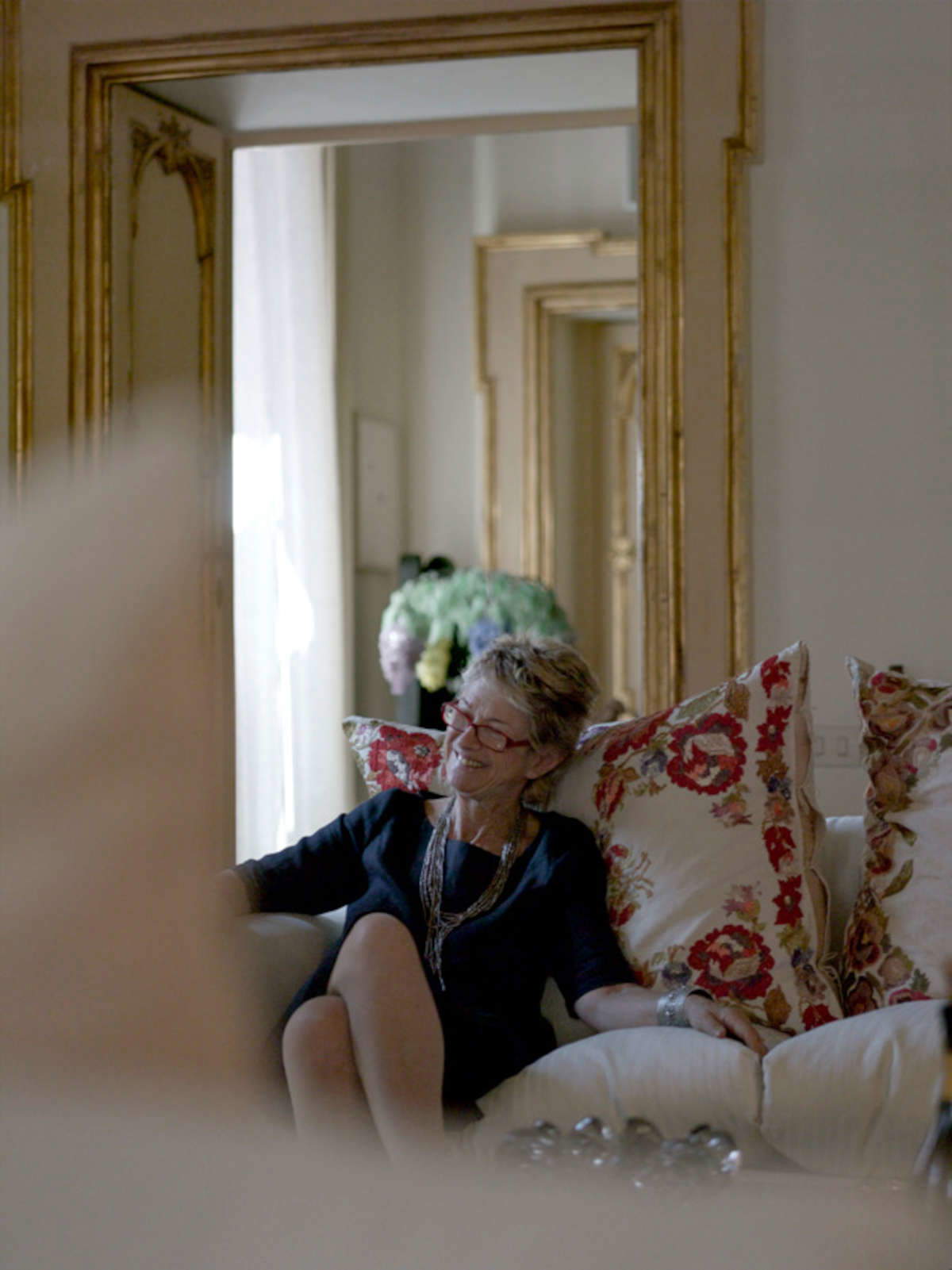Luisa Laureati left us in the past few days, a gallerist mainly of contemporary art, hers was the Galleria dell’Oca she founded in 1965, and a figure who walked directly through the world of Roman culture in those years. The years when Italy opposed to the radical and brute abstractionism of American painting an abstract art in continuity with the figurative feeling of the West: Mario Schifano above all.
Thanks to Luisa, artists, literary men and film men were at home in the Galleria dell’Oca during those decades. To recall just a few, Guttuso, rather than Franco Angeli, Kounellis, Ennio Flaiano, Goffredo Parise, Burri, Valerio Zurlini, Moravia, Ungaretti, Elsa Morante, Pasolini or Sebastian Matta, whose wife, out of snobbery and glee, introduced herself to those she did not know by saying “I am crazy.” Until she met Giuliano Briganti, one of the great art historians of the 20th century, a wonderful man of intelligence, sympathy and kindness whom she married in 1974.

I have memories of Luisa that are inextricable from the figure of Giuliano. To name just one, I think of when, one late August 1992, Eugenio Scalfari, founder and editor of “la Repubblica,” asked Giuliano to go to Parma to see what was true about the extremely violent controversy that had been raging in those months over the restoration of the Baptistery, a masterpiece by Benedetto Antelami, that I myself was carrying out. Giuliano arrived in Parma with Luisa and asked me to accompany him. There he ascertained from the truth (as he later wrote) that all that uproar was nothing but the outcome of a provincial conspiracy hatched by ridiculous superintendent figures, ignorant professors, sellout lawyers and conniving judges. The discovery of a picture of desolating squalor and mediocrity was lightened in laughter by the frequent and paradoxical phone calls that Zeri made to him, either informing himself of how things really were about that restoration, or changing his voice to pass himself off from time to time now as Elide Maiocchetti who “c’ho er pupo che je piace tanto l’arte,” now for a lady from Loreto whose surname was followed by irreferable rhymes, and so on. The phone calls always greeted by Luisa laughing: Zeri was Giuliano’s lifelong friend and those constant phone calls were a way of expressing his affection. And here I think of Luisa’s big tears, as big as a child’s, that mingled with a smile in front of Giuliano’s noble dead body displayed in their beautiful house on Via della Mercede on December 17, 1992.
The last time we were in touch was about a year ago, when I wanted to republish three articles on the failure to protect the artistic heritage that appeared in 1991 in “la Repubblica,” then the leading newspaper of Italian intellectuals: one by Urbani, one by Giuliano and one by Zeri. It was an idea that Luisa said she was delighted to share and which I did not follow up on, but perhaps it can be taken up again, given the times. While staying with Luisa, it says everything that could not fit in these few lines of mine a nice documentary by Tommaso Tovaglieri that can be seen in the Treccani website.
Warning: the translation into English of the original Italian article was created using automatic tools. We undertake to review all articles, but we do not guarantee the total absence of inaccuracies in the translation due to the program. You can find the original by clicking on the ITA button. If you find any mistake,please contact us.